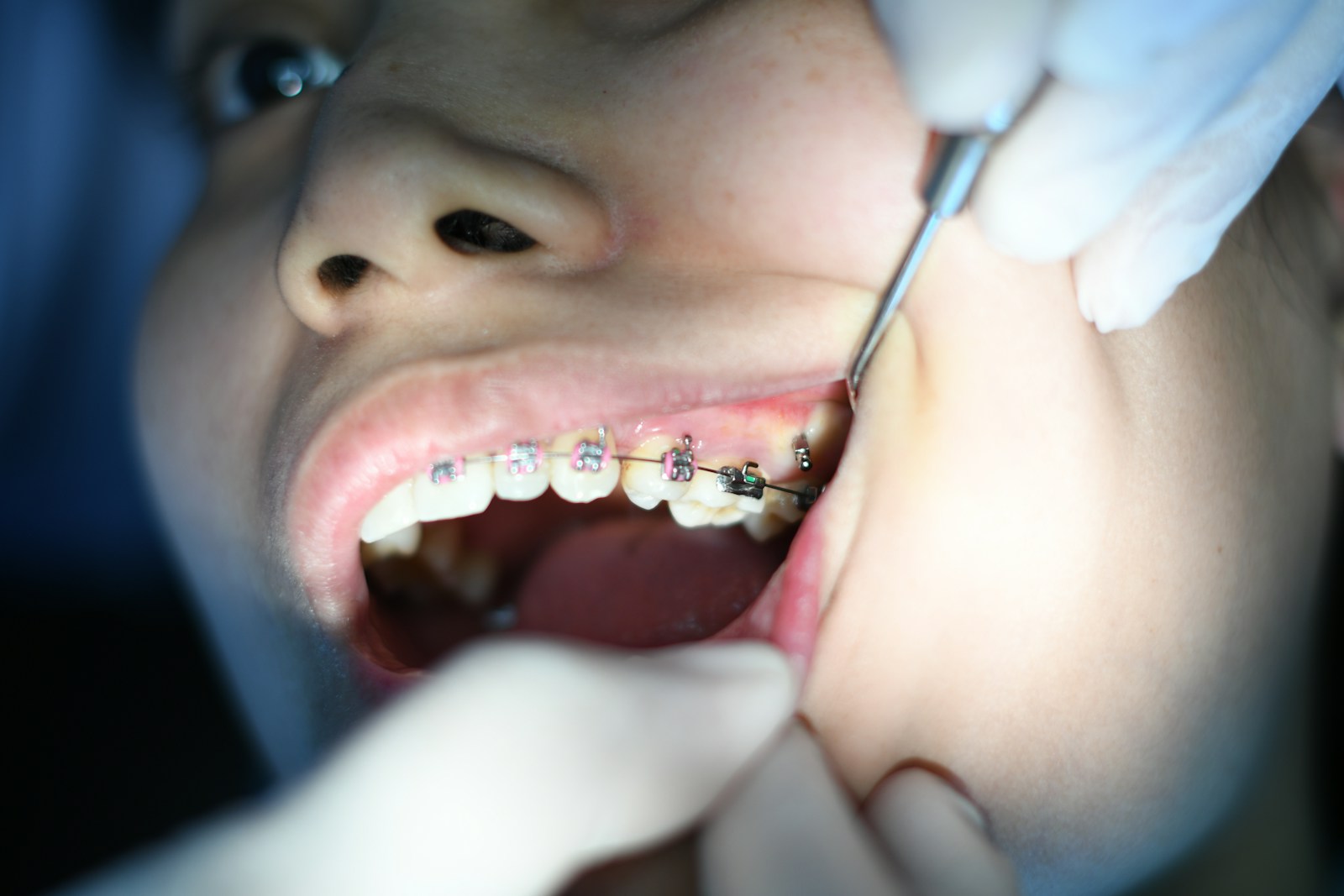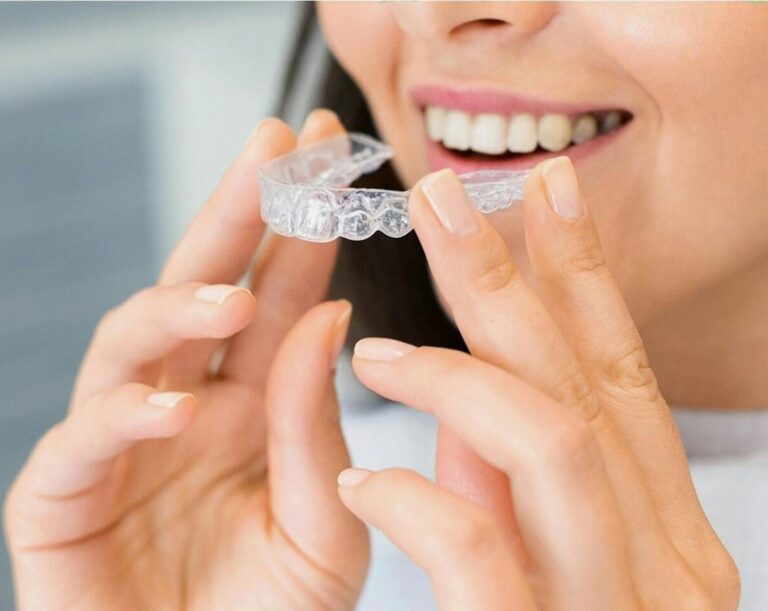How Do Orthodontic Braces Move Teeth Over Time?
If you’ve ever wondered how tiny brackets and wires can gradually shift your teeth into perfect alignment, you’re not alone. Orthodontic braces may look simple on the surface, but they work through a fascinating combination of gentle pressure, biological response, and precise timing. In this post, we’ll break down how braces actually move your teeth over time—and why patience really pays off when it comes to your smile.
Understanding the Basics of Tooth Movement
Teeth aren’t fused to your jawbone—they’re held in place by a network of ligaments and bone called the periodontal ligament. This ligament acts like a shock absorber, allowing slight movement while still anchoring the tooth securely.
When braces apply pressure to your teeth, it stimulates your body to reshape the bone around them. That’s right—orthodontics is not just about moving teeth; it’s also about reshaping your jawbone over time to hold those teeth in their new positions.
The Key Components That Make Braces Work
1. Brackets
Brackets are the small square-shaped attachments that are bonded directly to the front surface of each tooth using a strong dental adhesive. Made from stainless steel or tooth-colored ceramic, these components are more than just anchors—they are essential in directing the precise movement of each individual tooth.
Each bracket has a slot through which the archwire passes, and this setup allows the wire to transmit pressure to the teeth in specific directions. The shape and design of the bracket, along with its exact placement on the tooth, determine how and where the force will be applied. This is why orthodontists spend a great deal of time positioning brackets carefully according to your customized treatment plan.
Brackets play a key role throughout your orthodontic journey by acting as control points for tooth movement. They work in tandem with wires, elastics, and other appliances to gradually bring your teeth into alignment, one small adjustment at a time.
2. Archwire
The archwire is the main component responsible for applying controlled, continuous force to your teeth. It runs through each bracket, creating a connected system that allows your orthodontist to guide the movement of your entire dental arch.
Typically made from stainless steel or flexible nickel-titanium, the archwire is shaped to reflect the ideal alignment of your teeth. When it’s attached to misaligned teeth, the wire naturally tries to return to its original shape. This creates gentle pressure that gradually encourages each tooth to shift in the right direction.
Throughout treatment, your orthodontist will periodically change or adjust the wire to apply new forces. These changes help maintain consistent movement, ensure your progress stays on track, and allow for more precise control as your teeth get closer to their final position.
The archwire’s size, material, and tension are all carefully chosen based on the stage of your treatment and the specific movements required. It’s a small but powerful tool that plays a central role in the success of your orthodontic journey.
3. Ligatures or Elastic Bands
Ligatures are small rubber bands or sometimes fine metal wires used to secure the archwire into the slots of each bracket. Though they may seem minor, these components play a key role in ensuring the archwire stays properly engaged with your brackets, allowing consistent pressure to be applied to your teeth.
Elastic ligatures come in various colors and are often changed at each adjustment appointment. They can lose elasticity over time, which is why routine visits are important for maintaining tension and progress. In some cases, orthodontists may use metal ligatures, which are twisted into place and can provide stronger or more targeted control.
In addition to these small ligatures, some patients may be given inter-arch elastics—larger rubber bands that stretch between the upper and lower braces. These help correct bite alignment issues, such as overbites, underbites, or crossbites. Their effectiveness relies heavily on patient compliance, as they must be worn exactly as instructed to guide jaw movement successfully.
4. Orthodontic Force
Orthodontic force is the biological engine behind how braces move your teeth. When braces apply gentle, consistent pressure to a tooth, they trigger a natural response in the body called bone remodeling. This process occurs within the periodontal ligament—the soft tissue that connects each tooth to the surrounding jawbone.
As the tooth is pushed in a specific direction, bone on the side where the pressure is applied begins to break down—a process called resorption. Simultaneously, on the opposite side of the tooth, new bone forms through a process called deposition. This coordinated breakdown and rebuilding of bone allow the tooth to gradually shift into its new position.
This movement happens very slowly to prevent damage to the root, ligaments, and surrounding tissues. The force must be precisely calculated and consistently applied, which is why orthodontists adjust your braces regularly. By carefully controlling the direction and strength of the force, they guide your teeth to their ideal alignment over time.
How Teeth Move Over Time
Tooth movement happens slowly and in stages. Here’s what a typical timeline might look like:
First Few Weeks
You’ll likely feel some pressure and mild discomfort as your teeth begin to shift. During this phase, movement is usually subtle—often just a loosening of your teeth as they respond to the pressure.
1–3 Months
More visible changes start to appear. Crooked teeth begin to straighten, and gaps may start to close. You’ll likely have your first adjustment appointment during this period.
3–6 Months
Significant alignment changes happen here. Your orthodontist will fine-tune the direction and speed of movement by changing the wire or adding accessories like springs or power chains.
6–12 Months and Beyond
By now, your teeth are noticeably straighter, and your bite may be under active correction. Continued adjustments guide the final positions, and fine detailing ensures your bite is stable and aesthetically pleasing.
Why Braces Take Time
You might wonder, “Why can’t we just speed this up?” The answer lies in biology. Moving teeth too quickly can damage the roots, the surrounding bone, or the gum tissue. A slow, steady approach allows your body to adapt and rebuild in a healthy way.
Additionally, every case is unique. Factors that affect treatment time include:
- The complexity of your case
- Your age (younger patients may see faster results)
- How well you follow instructions (like wearing rubber bands)
- How often you attend your appointments
What Happens After Teeth Are in Position?
Once your teeth are aligned, the work isn’t quite done. Your orthodontist will remove your braces, but you’ll be given a retainer to wear. This helps your teeth settle into their new positions while the bone and tissue stabilize around them.
Skipping this step could allow your teeth to slowly shift back—so don’t underestimate the importance of your retainer.
Final Thoughts
Braces are a remarkable blend of science and strategy. They don’t just straighten teeth—they create harmony between your bite, jaw, and smile. While the process takes time, each tiny movement is part of a carefully designed plan.
If you’re just starting your orthodontic journey, stay patient, follow your orthodontist’s instructions, and trust the process. The end result—a confident, healthy smile—is well worth the wait.






